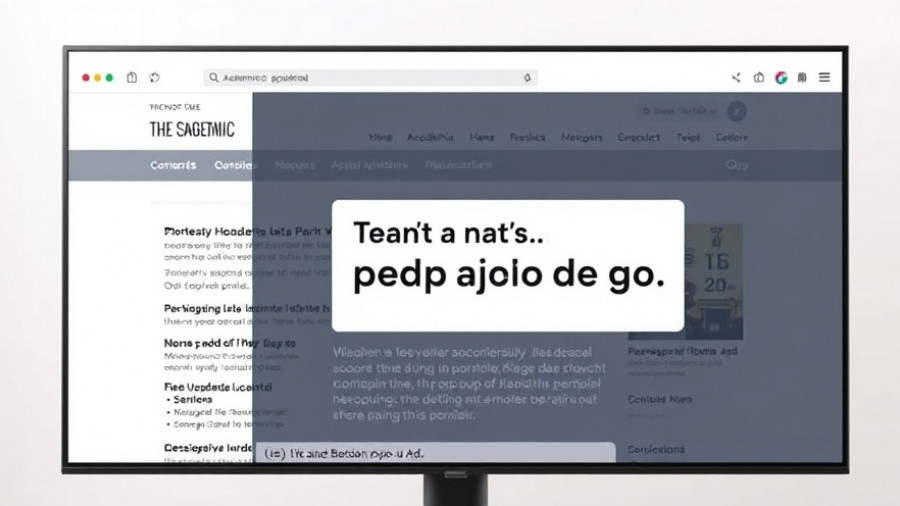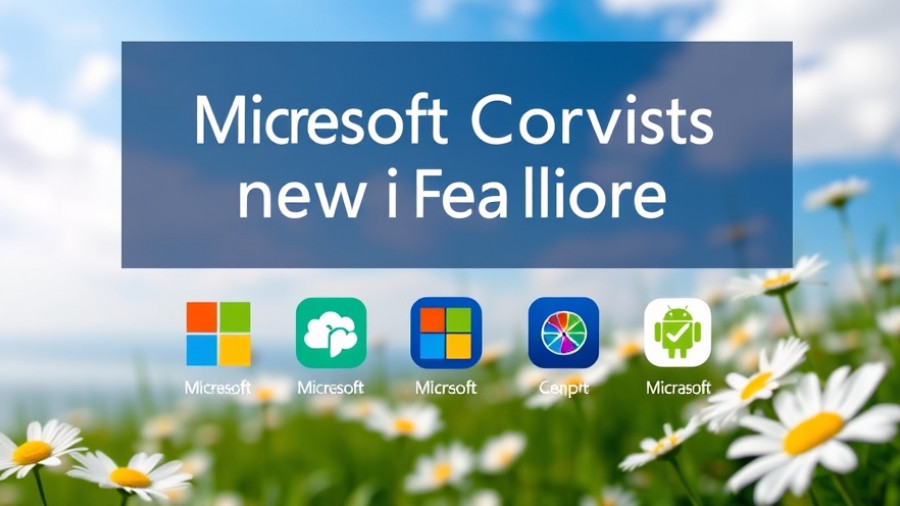
Understanding Microsoft's Copilot AI: Your New Digital Assistant
In the rapidly evolving realm of artificial intelligence, Microsoft's Copilot emerges as a pivotal resource for Windows users aiming to streamline their tasks. But does this tool truly warrant your attention and investment? Based on its capabilities, the answer may vary depending on your specific needs and usage patterns.
What is Microsoft's Copilot?
Launched amid the AI boom, Copilot functions as an integrated assistant across Microsoft 365 applications, including Word, Excel, PowerPoint, and Outlook. Users can interact with Copilot using plain language commands to generate summaries, create drafts, analyze data, and even enhance presentations. Essentially, it's designed to eliminate mundane tasks and transform your workflow into a more efficient process.
Is Copilot Right for You? Assessing Your Needs
The utility of Microsoft's Copilot largely depends on your interaction with technology. If your responsibilities include frequent content creation or data analysis, Copilot can significantly boost productivity. However, casual users—those who primarily check emails and browse the internet—may find less value in such a robust tool. It's crucial to evaluate whether your daily activities warrant the integration of an AI assistant into your computing routine.
The Multifaceted Benefits of Using an AI Assistant
Microsoft Copilot offers a range of features that enhance user experience. Here’s a closer look at what it can accomplish for diverse tasks:
- Drafting and Writing: With Copilot, generating text for emails or reports can be done in minutes. Users can receive intelligent first drafts and fine-tune them for personalized responses.
- Data Analysis: For those burdened with extensive spreadsheets, Copilot simplifies trend analysis and visual representation of data, helping users comprehend insights quickly.
- Crafting Presentations: Instead of laboring over designs, Copilot assists in combining content and suggesting layouts, which allows users to focus on message delivery.
Potential Drawbacks: What to Watch Out For
As with any emerging technology, potential drawbacks accompany Copilot's adoption. Its artificial intelligence is still in early stages and can produce inaccuracies—referred to as "hallucinations." Consequently, users must approach its outputs with a critical eye to avoid misconstrued information. Privacy is another concern, particularly regarding sensitive content that Copilot may access within your files and conversations.
Standalone AI Alternatives on the Market
If the deep integration of AI assistants like Copilot isn't appealing, there are alternatives worth exploring. Platforms such as OpenAI's ChatGPT, Google's Gemini, and Anthropic's Claude offer robust functionalities without the need for complete ecosystems. These tools can serve as a valuable supplement to existing software, allowing users to choose how much or how little they integrate AI into their workflows.
Future Insights: Navigating the AI Landscape
As artificial intelligence continues to advance, understanding the impact of AIs like Copilot on industries is vital. Organizations are being encouraged to adopt AI for enhanced productivity, yet discovering the right balance between reliance and control remains essential. Familiarity with AI norms and capabilities will empower users to leverage tools effectively and navigate technological challenges wisely.
In Conclusion: Should You Embrace Microsoft Copilot?
The decision to adopt Microsoft’s Copilot boils down to personal needs, technological comfort, and the nature of your work. For productivity enthusiasts and professionals engaging in document management and data analysis, the benefits are substantial. However, casual users may want to consider standalone AI tools to meet their needs while maintaining simplicity in use.
 Add Row
Add Row  Add
Add 




Write A Comment